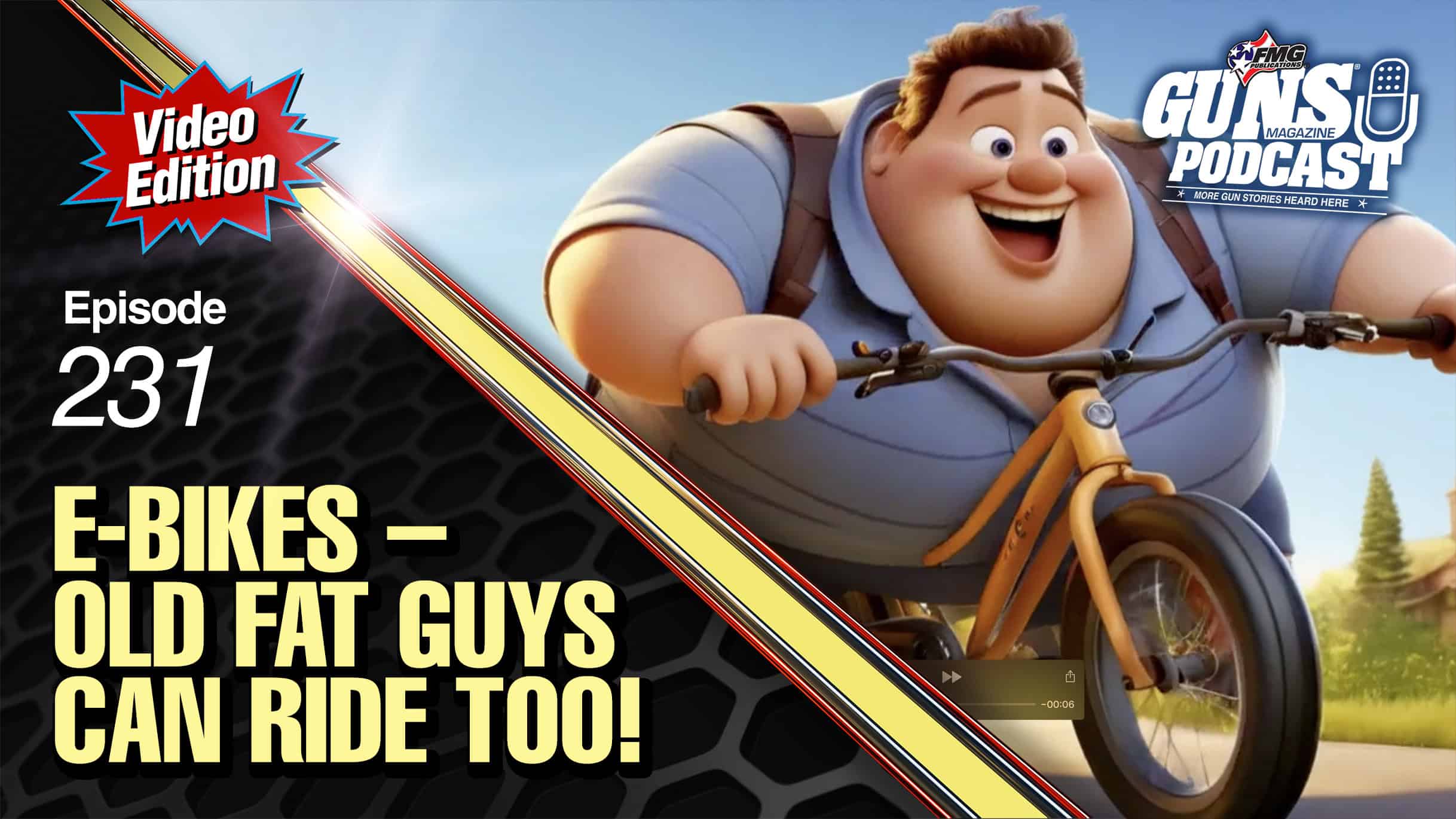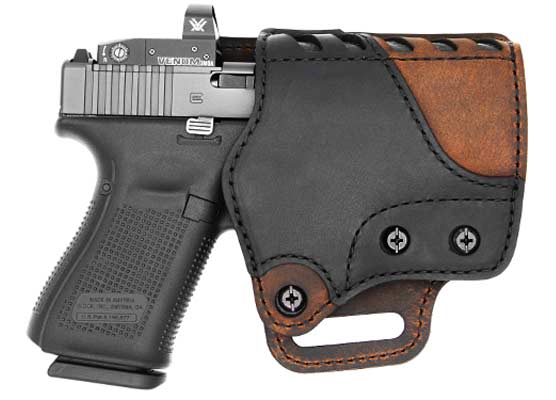Rifles | Lever-Action |
1
The levergun I am currently shooting has plenty of history and tradition connected with it. It’s Navy Arms’ .357 Magnum reproduction of the legendary Winchester Model 1873. Let’s take a look at how it evolved.
Looking first at the history of Winchester, we have to go back to the 1850’s. Two men destined to become very famous, Horace Smith and Daniel Wesson, began manufacturing a magazine-fed, lever-action pistol in their Connecticut plant. It was called the Volcanic, and one Benjamin Tyler Henry was in charge of production.
In 1855 Smith & Wesson was reincorporated with a new name, Volcanic Repeating Arms Co. One of the investors was a shirtmaker by the name of Oliver Winchester. The Volcanic, both in pistol and rifle form, did not prove to be financially lucrative, and in 1856 the company was bankrupt. Winchester, however, purchased the entire company and reorganized it as New Haven Arms Company with B. Tyler Henry as shop superintendent.
In 1860 the Henry rifle from New Haven Arms Co. became the first successful repeating rifle using fixed ammunition. The caliber was .44 Rimfire and the cartridges loaded from the front of a tubular magazine—much like .22 leverguns today. In 1866 the King’s Patent loading gate was incorporated into the receiver and the 1860 Henry evolved into the 1866 Winchester. At this time New Haven Arms became Winchester Repeating Arms. Both rifles had brass frames and were chambered for the original .44 Rimfire round. The stage was now set for what would be known as “The Gun That Won The West”.
Starting with an iron—then a steel—frame, the 1866 evolved into the Model 1873. The cartridge was also changed from .44 Rimfire to the .44 Winchester Center Fire or .44 WCF—today usually referred to as the .44-40. All three of these rifles featured what is known as a toggle-link action.
The toggle link works on the principle of a knuckle—a design also used on the much larger Model 1876, a levergun, and the model Theodore Roosevelt preferred for big-game hunting. With the coming of John Browning and the Model 1886, the action was changed to a much stronger version with two steel bars at the back, which locked everything in place for firing. This same principle was used in a smaller Model 1892 Winchester, which eventually replaced the Model 1873. Today, all of these 19th-century Winchesters live on in replica form with those bearing the Winchester name being produced by Miroku in Japan.
In the late 1950’s I acquired my first replica percussion sixgun imported by Navy Arms, founded by Val Forgett and headquartered in New Jersey. I believe Forgett’s first replica was the .36 Model 1851 Navy. Over the decades Navy Arms grew, and today, anyone who enjoys shooting replicas of 19th-century arms can thank Val Forgett.
The Navy Arms Model 1873 Rifle (top) compared to the standard Winchester 1873.
The short-stroke lever kit on the Navy Arms version (below) permits a shorter
lever throw.
Currently, Navy Arms, along with Gibbs Rifle Company and Old Western Scrounger, is headed up by Val Forgett III. Now they’ve once again reached back into history to resurrect a traditionally styled levergun. However, this particular Model 1873 has many special features as would have been found on some of the original Winchesters in the 1870’s. This is the type of rifle, which would have been special ordered by someone taking particular pride in their firearm. Currently, Miroku is producing a standard Winchester Model 1873 with a blued receiver, walnut stock and forearm, round barrel and curved steel butt plate. But this Navy Arms version is more like you’d expect a “1 of 1,000” Winchester original to have looked.
Just as with the original 1873, this modern version has a sliding dust cover on top of the receiver to keep dirt and debris out of the action. When the lever is operated the dust cover slides to the rear and stays there until you push it forward with your thumb.
The first thing I noticed about the Navy Arms 1873 is the beautifully color case-hardened receiver. One look and I surmised it could only have been done by Doug Turnbull. And it was. It consists of striking blue, brown and gray… beautifully mottled colors as only Turnbull can do them. In addition to the receiver, the lever, hammer, trigger, sliding dust cover and forearm tip are also case colored.
All of this matches up with a deep blue finish on the octagon barrel and tubular magazine. Stamped on the left side of the barrel is “Winchester Model 1873—Caliber 357 Mag-38 Spl Only.” On the right side is “Made by Miroku-Japan—Imported by BACO, Inc. -Morgan, Utah” and “Winchester is a registered trademark of Olin Corporation.” Finally, on top in front of the rear sight is “Navy Arms.”
The exceptionally nice American walnut stock is finished with a very tough glossy coating adding to the good looks of the rifle. The forearm and pistol grip area are nicely checkered. Wood-to-metal fit is excellent.
I’ve never understood why anyone ever came up with the steel curved buttplate found on most traditional lever guns of the era, so I am happy to report the rifle has a shotgun-style buttplate. There isn’t much felt recoil exhibited by the .357 Magnum cartridge for which this Navy Arms Model 1873 is chambered; however, the sharp points on a steel curved buttplate do not need much in the way of recoil to make things uncomfortable.
Sights consist of an adjustable for elevation semi-buckhorn rear sight matched up with a gold bead front. Both are set in dovetails should windage adjustment be necessary. I do not get along real well with buckhorn sights; however, the tang of the Navy Arms Model 1873 is already drilled and tapped for a tang sight. Another nice touch to this Navy Arms Model 1873 is the fact it has a factory-installed short-stroke kit. Without it, the lever would bow forward far enough to form a 90-degree angle with the receiver, but with the short-stroke kit the angle is more like 75 percent. The upshot is the Navy Arms Model 1873 can be operated very quickly. The trigger pull on mine was a very crisp 4 pounds.
Turnbull color case-hardening, a .357 Magnum chambering and smooth
shootability make the Navy Arms Model 1873 a hit from the get-go.
These targets show John’s Navy Arms Model 1873 handles
several 158-grain .357 factory loads quite well.
Thanks to the toggle-link action, cartridges in the magazine tube come straight back and then straight up to be fed into the chamber. This is a very smooth operation—and especially so when combined with the short-stroke kit. However, all is not perfect.
This Navy Arms 1873 rifle is advertised as being able to take both .357 Magnum and .38 Special cartridges. However, when the shorter cartridge comes straight back out of the magazine tube onto the lifter, it allows the next cartridge in the magazine tube to also try to enter and the lifter locks up on the rim of the second round. I tried some dummy .38 Specials with regular semi-wadcutters, which proved too short and jammed up the action. This can be remedied by using relatively long bullets such as 168-grain cast lead RN’s (remember, though, plain-base bullets normally only work at a relatively very low velocity).
With the buckhorn sights, my test-firing was done at 40 yards. Two of my handloads using the Lyman/Thompson 358156GC and loaded with 2400 and 4227 did not perform well at all—grouping in the 3-inch range. But my handload consisting of the Hornady 158-grain XTP-JHP over 15.5 grains H110 clocked out at 1,644 fps and put four shots in 1-1/4 inches at 40 yards. With factory loads the most accurate tested was Speer’s 158-grain Gold Dot HP at 1,864 fps. This load produced 4-shot groups in a very tight 5/8 inches. I was surprised at the performance of the Black Hills 158-grain lead SWC (1,238 fps), and the Federal 180-grain Cast Core (1,602 fps), both of which produced groups of just over an inch.
I normally don’t like to play the “What if you could only have one gun” game. But I will say a good .22 rifle is an absolute given, and after that my first choice in a centerfire rifle is a .357 Magnum, and this is about the best looking .357 rifle ever produced. No, I would not use it for big-game hunting, although it would certainly suffice for hogs and small deer. It makes a perfect “packing around” lever action. With 10 rounds in the magazine it would certainly serve for self-defense and for the grand old pastime of plinking. I don’t know of anything else which could top it.
By John Taffin
| Load | Velocity | Group Size |
| (brand, bullet weight, type) | (fps) | (inches) |
| Black Hills 158 JHP | 1,546 | 1-1/4 |
| Black Hills 158 LSWC | 1,238 | 1-3/8 |
| Federal 180 JHP | 1,583 | 2 |
| Federal 180 Cast Core | 1,602 | 1-1/4 |
| Hornady 125 XTP-JHP | 2,206 | 1-3/4 |
| Hornady 158 XTP JHP | 1,869 | 1-1/4 |
| Hornady 158 XTP FP | 1,847 | 1-1/2 |
| Speer 125 GDHP | 2,256 | 1-3/4 |
| Speer 158 GDHP | 1,864 | 5/8 |
| Winchester 125 JHP | 2,196 | 1-3/4 |
| Winchester 145 Silvertip | 1,911 | 2 |
Note: Chronograph set at 10 feet from the muzzle. Groups are 4 shots at 40 yards.
Maker: Miroku
Importer: Browning Arms
Distributor: Navy Arms
44 Dupont Road, Martinsburg, WV 25404
(304) 274-0004
https://gunsmagazine.com/company/browning/
Action Type: Lever
Caliber: .357 Magnum
Capacity: 10+1
Barrel Length: 20 inches
Overall Length: 39 inches
Weight: 8 pounds
Finish: Blued with case colored receiver and furniture by Turnbull
Sights: Semi-buckhorn rear
Marble gold bead front
Stock: American walnut
Price: $2,500

Download A PDF Of The GUNS Magazine March 2015 Issue Now!


